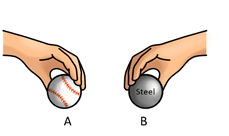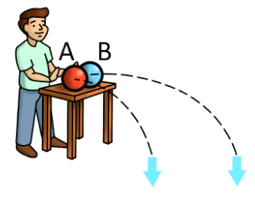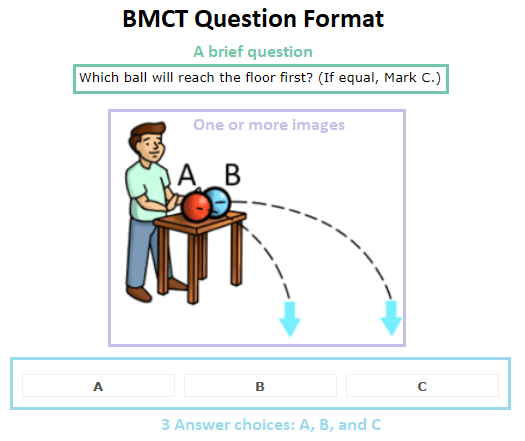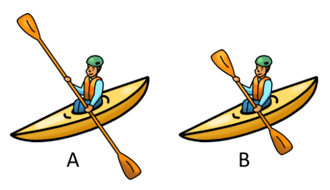The following page will give you the most up-to-date, comprehensive preparation plan for the Bennett Mechanical Comprehension Test (BMCT).
Each component of the preparation was carefully designed to help you address a particular challenge of the test:
- Full-length mock tests of the Bennett Test - will get you familiar with the test structure, content, and formatting, reducing anxiety and improving performance.
- Extra practice tests divided by topics - will sharpen your knowledge and skills in all 10 topics of the Bennett test.
- PDF mechanical and electrical study guide - will give you a broader theoretical knowledge of test topics.
- Detailed explanations - will teach you the physical principles behind Bennett-style questions so you can solve any question with ease.
- Personalized score reports - will allow you to focus your practice on the areas in which you are weakest.
This focused plan allows you to improve your score on the BMCT with no more than 2-3 days of concentrated practice.
Further below, you will find a detailed overview of the BMCT test, tips for success, and sample questions.
- 2 Full BMCT-II mock tests (2025)
- 2 Full BMCT-I Practice Tests (older version)
- 21 topical mechanical aptitude practice tests
- Mechanical and electrical PDF study guide
- Explanations, solving tips, and score reports
What is the Bennett Mechanical Comprehension Test (BMCT)?
The Bennett Mechanical Comprehension Test (BMCT) is a pre-employment mechanical aptitude test developed by Pearson Assessments. This test aims to find individuals with good mechanical reasoning and is therefore used mainly for entry-level positions.
The test contains 55 questions in 25 minutes, covering the following topics:
- Velocity (28%)
- Force and Torque (23%)
- Fluids (15%)
- Pulleys (8%)
- Thermodynamics (Heat) (6%)
- Electricity (6%)
- Gears (6%)
- Wheels (4%)
- Acoustics (4%)
- Optics (2%)
For a free Bennet Mechanical Comprehension test, see the following page.
The Bennett Test 3-Minute Guide [Video]
Alternative Names of the Bennett Mechanical Comprehension Test
All the following names refer to the test officially named Bennett Mechanical Comprehension Test (BMCT):
- Bennett Test
- Bennett Mechanical Test
- Bennett Mechanical Aptitude Test
- BMCT
- BMCT-II / BMCT-I
- BMCT Test
BMCT-I vs. BMCT-II
The Bennett Mechanical Comprehension Test comes in two versions:
- BMCT-II – The current version – 55 questions in 25 minutes. Online only.
- BMCT-I – An older version – 68 questions in 30 minutes. Online or pen-and-paper.
Most commonly you will be taking the BMCT-II version, as Pearson (the test developer) does not officially distribute BMCT-I anymore. However, some employers still use the older version.
How Difficult Is the Bennett Mechanical Comprehension Test?
The Bennett Mechanical Test is considered a mid-to-high level test in the realm of mechanical aptitude tests.
It should be noted that the difficulty of the test questions is not uniform, and the test will combine test questions of various difficulty levels, so each candidate faces the same overall challenge.
While most candidates will do well with the basic and mid-level questions, solving the high-level questions is what will separate you from the rest and allow you to pass the BMCT test successfully.
What Score Do I Need to Pass the Bennett Test?
The score you need greatly depends on the job you want. Unlike other mechanical aptitude tests, the Bennett test does not have a predetermined passing score and your score is determined compared to other candidates, based on your prospective employer's needs.
The developer of the Bennett test, Pearson Assessments has set standard scores required for various occupations:
- Automotive/Aircraft Mechanic – 45/55 (average 38-39)
- Engineer – 49/55 (average 43)
- Installation, Maintenance, Repair – 43/55 (average 41)
- Technical Sales Representative – 44/55 (average 38)
- Skilled Tradesperson – 45/55 (average 39)
- Mechanical Trades – 45/55 (average 39)
As you can see – the differences between the average and top performers are not THAT significant – 4 to 5 questions total!
Ace the BMCT
Get those extra 4-5 points for a passing score with focused and accurate preparation for the Bennett Mechanical Comprehension Test (BMCT).
Does the Bennett Mechanical Comprehension Test Have an Answer Key?
Since test questions are randomly distributed between candidates, the Bennett Mechanical Comprehension Test has no answer key.
Therefore, your best option for passing the Bennett test is to learn the physical concepts behind the questions, so you can correctly answer every time.
7 Practice Tips for the Bennett Mechanical Test
The Bennett Mechanical Comprehension Test doesn’t deal with complex techniques, calculations or high-level physics. It basically assesses your ability to grasp physical concepts and apply them to never-seen-before scenarios.
As such, the following 7 practice techniques are recommended to maximize your success with the BMCT test:
- Learn Physical Concepts and Principles
- Practice the Actual Test
- Know the 4 Question Formats
- Focus on the Right Things
- Go to the Extremes
- Know Your Weaknesses
- Ignore Environmental Effects
BMCT Practice Tip #1 – Learn Physical Concepts and Principles
This is probably the single most important preparation tip for the Bennett Mechanical Test.
The variety of topics and scenarios in the Bennett test makes memorization completely pointless. Therefore, it is essential that you learn the physical concepts behind questions, so you can re-apply them to any possible scenario.
What is the underlying physical principle in this question?
Answering THIS question will not only help you in solving the particular question you’re facing. It will also help you with future questions on the same topic.
Sample - Can You Spot the Physical Principle?
The following are two typical questions from the Bennett Mechanical Comprehension Test. After solving question 1, try using the physical principle behind it to solve question 2.
Question 1
Which ball will hit the ground first? (If equal, mark C.)

Now, use this principle to solve the next question:
Question 2
Which ball will hit the ground first? (If equal, mark C.)

BMCT Practice Tip #2 – Practice the Actual Test
The well-defined structure of the Bennett Mechanical Comprehension Test has all kinds of benefits for those preparing with accurate test mockups.
Besides the self-evident benefits of getting familiar with the time constraints and test formatting, thus increasing confidence and solving speed, utilizing Bennett-specific practice techniques will amp up your score even further.
BMCT Practice Tip #3 – Know the 4 Question Formats
The questions in the Bennett test are always formatted the same:
- A brief question
- 1, 2, or 3 images
- 3 answer choices: A, B, and C

Yet this basic structure can come in 4 different formats:
- Format I – 1 image, 1 scenario
- Format II – 1 image, 2 scenarios
- Format III – 2 images, 2 scenarios
- Format IV – 3 images, 3 scenarios
For each of these types, you will find specific techniques that make solving faster and easier. For instance, the Going to the Extremes Technique is especially suited for Format II questions.
BMCT Practice Tip #4 – Focus on the Right Things
BMCT Practice Tip #5 – Go to the Extremes
This technique holds true for all mechanical aptitude tests. However, it is especially suited for the BMCT. How does the technique work?
When asked to determine the relation between two scenarios, take the variation and stretch it to the extreme. While keeping in mind that only physical principles matter in the Bennett test, this can often give you a good hunch about the correct answer.
Check out this sample question:
BMCT Practice Tip #6 - Know Your Weaknesses
Every candidate has his or her own strengths and weaknesses. Some have difficulty grasping the implications of an accelerating system, others are especially confused by gear mechanisms.
When practicing, it is highly important to combine this knowledge of yourself with the most frequent Bennett Test topics to make your practice as focused and effective as possible.
BMCT Practice Tip #7 - Ignore Environmental Effects
The Bennett Mechanical Comprehension Test deals with theoretical physics. As such, real-world effects that are not at the core of the question should be ignored. Some examples may be:
- Friction
- Non-uniform distribution of mass
- Material strength (assume infinite)
Note that it takes practice and experience to identify whether a topic stands at the core of the question or not.
Tips for the Bennett Mechanical Comprehension Test Day
You’ve finished your practice and you have come to the day of the actual test. Here are 4 tips you should follow during the test to make the best out of this one-shot:
BMCT Test-Day Tip #1 – Don’t Leave Questions Unanswered
The Bennett Mechanical Comprehension Test does not reduce points for wrong answers. Therefore, guessing is better than leaving a question unanswered.
Tip #2 – Use the “Review” Option
During the actual test, you will have the opportunity to review questions you’re not sure about and get back to them later. Use that option! If you’re not sure about an answer, guess it and move on.
Important: It is still recommended to select an answer, even if you plan to get back to the question later.
Why?
Considering that no points are reduced for wrong answers on the BMCT, it is wise to select an answer in case you find yourself at the end of the test with no time left to review questions.
Tip #3 – Manage Your Time Well
With an average of fewer than 30 seconds per question, time is a major issue on the Bennett Mechanical Test.
While practicing actual test simulations is going to make time management throughout the Bennett test more natural to you, it is still important to occasionally check the time and to know if you are on a good pace or should speed things up.
Tip #4 – Out of Options? Trust Your Gut!
The Bennett Mechanical Aptitude Test is designed to assess your mechanical aptitude – your ability to understand and apply physical concepts.
These are often things we deal with in everyday lives – in home appliances, games, physical activity, etc. If you find yourself clueless in a particular question, don’t overcomplicate – trust your gut feeling as a last resort – you have pretty decent chances of making it right.
What Employers Use the Bennett Mechanical Aptitude Test?
The most common employers using the Bennett Test are companies employing large personnel of technical employees, such as Delta Airlines, GM, Keyence, DuPont, Valero, Smurfit Kappa, Ineos, Michelin, and many, many more.
What Positions Require the Bennett Test?
From an analysis of over 1,500 job candidates required to take the BMCT test, here are the most frequent positions:
- Mechanics and maintenance mechanics
- Operators
- Machine and process operators
- Apprentices
- Millwrights
- Aircraft support mechanics / Aircraft maintenance technicians
- Pipefitters
- Technical sales representatives
- Students in mechanical or technical programs






